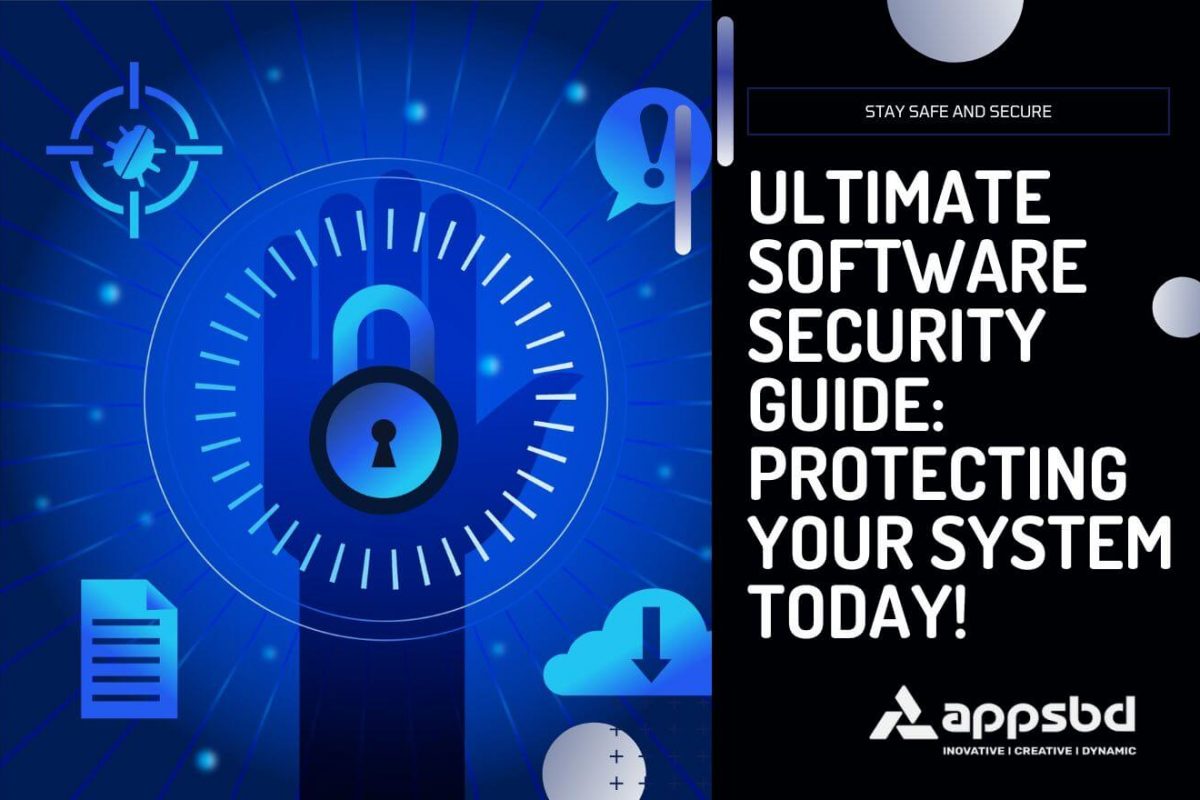
How to Protect Software: Your Ultimate Security Guide
Written by Md Ferdous Hassan Alin. Posted in Elite Licenser, WordPress No Comments
Introduction How to Protect Software
In today’s digital age, the importance of protect software cannot be overstated. With cyber threats constantly evolving, ensuring robust software security is crucial for any organization or individual. This guide will walk you through essential strategies on how to protect software effectively, ensuring your applications remain secure and resilient against various threats.
Understanding Software Security
What is Software Security?
Software security involves measures and practices designed to protect software from unauthorized access, use, disclosure, disruption, modification, or destruction. It is a crucial aspect of overall cybersecurity, aiming to safeguard both the software itself and the data it processes.
Common Software Vulnerabilities
Understanding common software vulnerabilities is the first step in safeguarding software. These vulnerabilities can be exploited by attackers to gain unauthorized access or cause damage.
- Buffer overflows: Occur when more data is written to a buffer than it can hold, leading to data corruption or code execution.
- SQL injection: An attack where malicious SQL statements are inserted into an entry field for execution.
- Cross-site scripting (XSS): Involves injecting malicious scripts into web pages viewed by other users.
Strategies for Protect Software
Implementing Robust Authentication
Implementing strong authentication mechanisms is vital for protecting software. This includes:
Password policies
Enforce strong password policies that require complex and unique passwords.
Multi-factor authentication
Implement multi-factor authentication (MFA) to add an extra layer of security, requiring users to provide multiple forms of verification.
Regular Software Updates and Patches
Keeping software up-to-date is essential for software protection.
Importance of updates
Regular updates ensure that any known vulnerabilities are patched, reducing the risk of exploitation.
Automated patch management
Using automated tools can streamline the process of applying patches and updates, ensuring timely protection.
Using Encryption Techniques
Encryption is a powerful tool for protect software and the data it processes.
Data encryption
Encrypt sensitive data to prevent unauthorized access, even if the data is intercepted.
Secure communication channels
Ensure that communication between software components is encrypted, protecting data in transit.
Conducting Regular Security Audits
Regular security audits are crucial for identifying and addressing potential vulnerabilities.
Internal audits
Conduct regular internal audits to review and improve security measures.
Third-party audits
Engage third-party experts to provide an unbiased assessment of your software’s security.
Employing Firewalls and Anti-Malware Tools
Firewalls and anti-malware tools are essential for protecting software from external threats.
Setting up firewalls
Configure firewalls to control incoming and outgoing network traffic based on security rules.
Anti-malware solutions
Deploy anti-malware tools to detect and remove malicious software that could compromise software security.
Advanced Software Protection Techniques
Code Obfuscation
Code obfuscation is a technique used to make software code more difficult to understand, enhancing security.
What is code obfuscation?
It involves transforming code into a form that is hard for humans to read while maintaining its functionality.
Benefits of code obfuscation
Obfuscation makes it harder for attackers to analyze and reverse-engineer software, protecting intellectual property and reducing the risk of attacks.
Utilizing Secure Coding Practices
Adopting secure coding practices is fundamental for developing secure software.
Secure coding guidelines
Follow established guidelines and standards for secure coding to minimize vulnerabilities.
Avoiding common coding pitfalls
Educate developers about common coding mistakes that can lead to vulnerabilities and how to avoid them.
Application of Intrusion Detection Systems (IDS)
Intrusion detection systems help monitor and detect suspicious activities.
Network-based IDS
Monitor network traffic for signs of potential attacks.
Host-based IDS
Monitor the behavior of individual devices for signs of compromise.
Safeguarding Software in Different Environments
Protect Software in Cloud Environments
With the increasing use of cloud services, protect software in the cloud is crucial.
Cloud security practices
Implement cloud security best practices to ensure data and application security in cloud environments.
Secure cloud configurations
Ensure that cloud resources are configured securely to prevent unauthorized access and data breaches.
Securing Mobile Applications
Mobile applications face unique security challenges.
Mobile app security measures
Implement security measures specific to mobile applications, such as secure coding practices and regular updates.
Common mobile security threats
Be aware of common threats to mobile applications, such as malware and insecure data storage.
Building a Security-Conscious Culture
Training and Awareness Programs
Educating users and developers about security is vital for effective software protection.
Importance of user training
Conduct regular training sessions to ensure users are aware of security best practices.
Regular security awareness sessions
Host ongoing security awareness sessions to keep security top-of-mind for all team members.
Establishing a Security-First Mindset
Creating a culture that prioritizes security is essential for long-term protection.
Encouraging best practices
Encourage adherence to security best practices at all levels of the organization.
Promoting a culture of security
Foster a culture where security is considered a shared responsibility.
Licensing Solutions for Software Protection
Using Elite Licenser for Software Protection
Licensing solutions like Elite Licenser can play a crucial role in software protection.
What is Elite Licenser?
Elite Licenser is a WordPress plugin that provides comprehensive software license management, protect software by issuing license keys.
Benefits of Elite Licenser
Using Elite Licenser helps in managing and protect software licenses, ensuring only authorized users can access the software, thereby enhancing overall software security.
If you want sale software with license then this blog for you.Visit to know more details.
Conclusion
Protect software is an ongoing process that requires vigilance and a proactive approach. By implementing robust authentication, keeping software updated, using encryption, conducting regular audits, employing firewalls and anti-malware tools, and adopting advanced protection techniques, you can significantly enhance your software security. Additionally, building a security-conscious culture and using licensing solutions like Elite Licenser further safeguard your software. Remember, the key to effective software protection is staying informed and adapting to the ever-evolving landscape of cyber threats.
FAQs
What is the most common software vulnerability?
The most common software vulnerability is SQL injection, where attackers insert malicious SQL statements into an entry field for execution.
How often should software be updated?
Software should be updated as soon as updates and patches are available to ensure protection against known vulnerabilities.
How can I ensure my team follows secure coding practices?
Ensure your team follows secure coding practices by providing regular training, conducting code reviews, and using tools that enforce coding standards and identify vulnerabilities.
What are the benefits of regular security audits?
Regular security audits help identify and mitigate potential vulnerabilities before they can be exploited by attackers. They also ensure compliance with security policies and standards.

